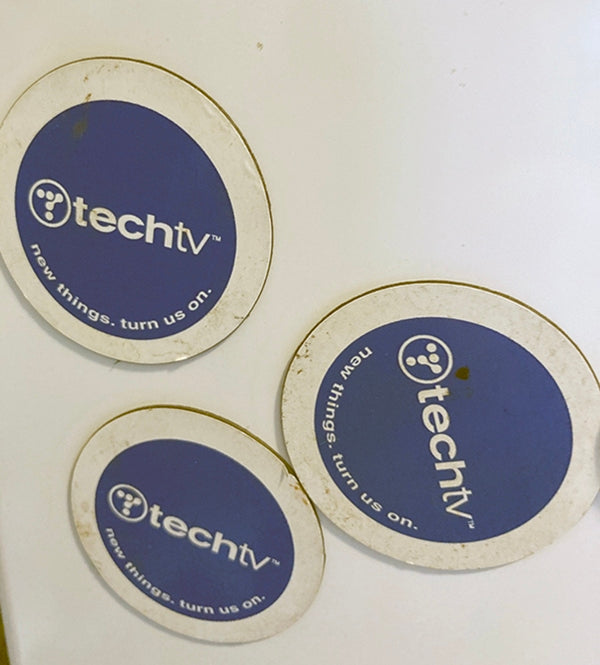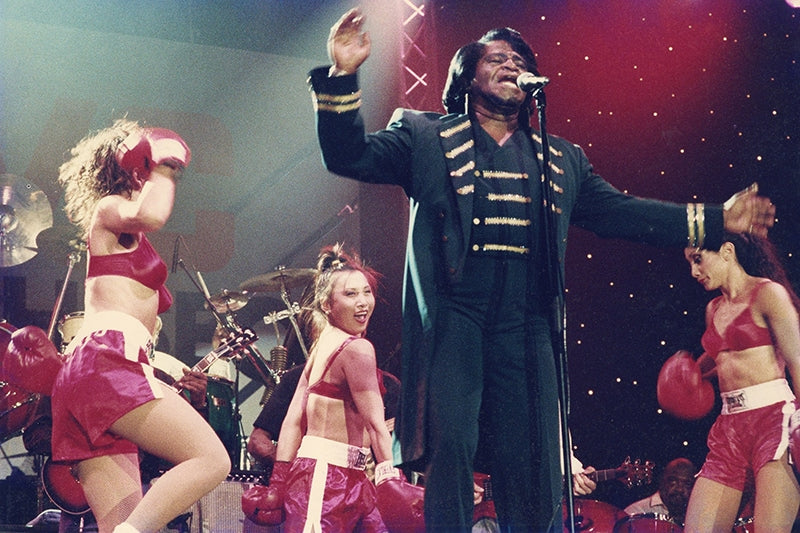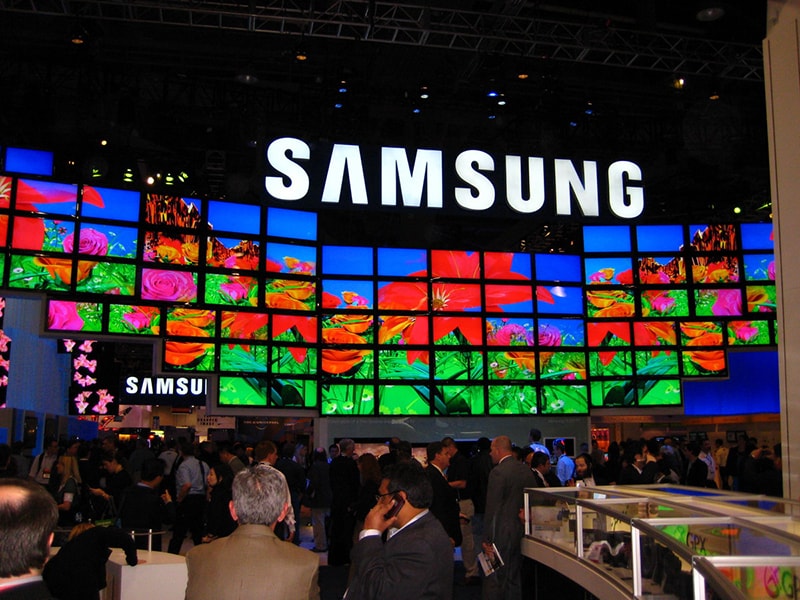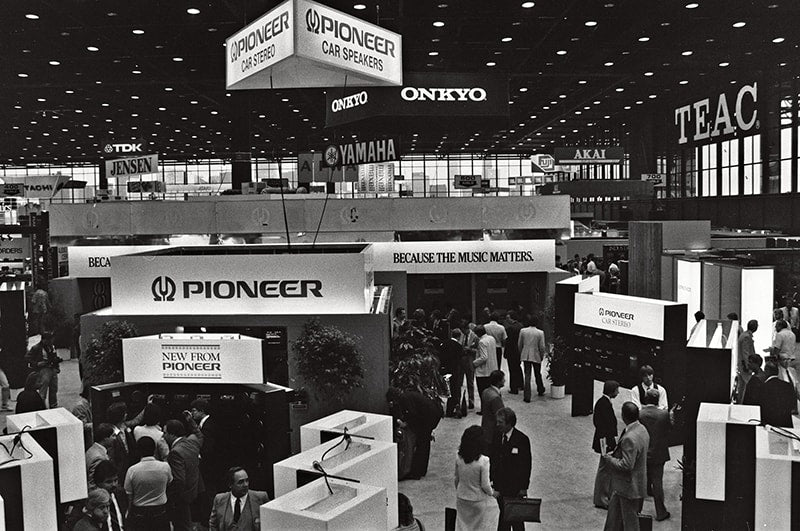On the top floors of 30 Rockefeller Center sits the Rainbow Room. It’s a lovely restaurant and sometimes event space that offers a breathtaking view of Manhattan. It even has its own bank of express elevators (duh, could you imagine taking a local elevator to the 65th floor?). In the 2000s and previously, the Consumer Electronics Association (CEA, now CTA, the Consumer Technology Association) chose that location for their annual pre-CES party, depending on availability. The CTA holds these events every year in early November in New York, approximately two months prior to the January CES in Las Vegas.
By 2000 I had five or six Consumer Electronics Shows under my belt, and I had gotten to know a fair amount of the media attendees. At the pre-CES party that year I met Jim Louderback from TechTV, a cable and satellite channel out of San Francisco that covered technology, computers and other products. Previously it was a Ziff-Davis-owned broadcast called ZDTV. At that time Paul Allen (of Microsoft) owned the channel. I was aware of the channel, which had launched in 1998, but it was not shown on the cable network I subscribed to.
Jim and I got to talking and he had heard of my program The Cable Doctor Show, which immensely pleased me. Then, to my surprise, Jim (now CEO of VidCon) asked me to be one of his judges for the Best of CES Awards, sanctioned by the CEA. I was absolutely flattered, and I accepted his invitation without hesitation. The deal was, no pay, but they would cover all expenses for me to attend the show. That was fine by me.
In the Central Hall, off the main show floor at the Las Vegas Convention Center, there were meeting rooms for manufacturers. These were rooms where buyers could get away from the busy show floor and place their orders. TechTV’s war room was in one of those N200-numbered meeting rooms. It was our home base and lunchroom. We started and ended our days there. The first few years, Jim Louderback, Andrew Hawn, and the late James Kim ran the Best of CES program and helped the judges, who were a cross-section of technology editors and journalists. All were experienced product evaluators and tech writers. I had read many of them and was familiar with their work. It was a cozy atmosphere compared to the incredibly hectic press rooms that were provided for the other members of the attending media corps. From the get-go I was at ease and comfortable.
On the beginning of the first day TechTV held a round table where all of us were introduced, and then we went over the procedures and how the judging would be implemented. Most of the categories, like high-end and portable audio, video, and home security (just to mention a few), had only one judge, but if a category was too big ( if it had received too many pre-show submissions for consideration), then two judges were assigned.
My category was car tech and accessories. Yeah, I know. How did that decision get made?

Courtesy of Ken Sander.
Here is the thing. You write about what you do not know, and you learn. Take portable GPS devices. One would be correct in assuming that at that time I did not know a dang thing about them, but, within a brief period I was able to zero in on their particulars. Some advice I received from the author David Baldacci: “If you want to know something, write about it and you will quickly get up to speed.” I trust that and find it to be true. I was a quick study and quickly planned out my booth visits. We started on press day, the day before the show opened, which was a blessing as it allowed us to cover the show floor fast before the hordes of attendees came in.
My first stop was to Alpine Electronics, manufacturers of car audio and navigational systems. They had just announced a touchscreen GPS. That was an important thing at the time. A touchscreen requires a multilayered screen, with the outside screen used to direct the touch commands. This required making the touchscreens durable, while also thin enough to realistically fit into its housing, and sensitive enough to be accurate. Alpine was one of the first companies to successfully accomplish that. Their GPS screen had a texture that gave you a feeling of feedback from your touch. I was suitably impressed, and coined the statement, “You touch it, and it touches you back.” Alpine liked that so much they used it their media materials. Though I didn’t make any money from it, I enjoyed the fact that they quoted it.
Moving along to the other manufacturers’ submissions in my category, I checked into police vehicle technologies, and found a manufacturer that was proposing the use of steel to reinforce the drivers and the shotgun side of police cruisers. Officers were instructed to use those doors as cover if they were shot at. The problem was that car doors do not provide suitable protection from penetration from most incoming rounds, which would pierce the police car doors. Although one would think that the idea of using steel to reinforce the doors was good, and a metal barrier was in fact a great solution, the additional weight ultimately made the idea unworkable. (Later, there was much experimentation to find a suitable ballistic panel material – aramid fiber and ceramic tile.)
The SONICblue company had announced and submitted to us the first-ever DVR (digital video recorder), the ReplayTV 4000, and one of the first MP3 players, the Rio. The company had come out of nowhere in the late 1990s with five technology firsts in total. I was surprised a few years later when the company went into bankruptcy. They were gone in a flash, but their technologies lived on with their product lines picked up by other companies.
That was part of the mystery of CES. There were times when a new company would announce a product with a big announcement and fanfare, and were never heard of again. Wishful thinking, or production issues, or the lack or loss of funding? Does anyone remember Moxi?

Fade to black: a 2008 Moxi DVR.
Occasionally there would be product wars. Companies would offer two competing formats for the same technologies. The classic example of course was the VCR wars between Betamax and VHS. Another famous format war was between Blu-ray DVD and HD-DVD, both were high definition. Toshiba officially threw in the towel on HD-DVD at CES 2008. That caught everyone by surprise, including their employees. I read some comments from the president of Toshiba. In an interview he was asked about the fallout from the decision to withdraw from the marketplace and was quoted as saying, “we were running 25 different companies and now we have 24.” No big deal. Yeah, right.
While working for TechTV we had our evenings free, and there were plenty of after-hours events to check out. One year there was a James Brown concert put on by Monster Cable. The event was an awards ceremony followed by a concert. Monster booked national acts like Brown, Diana Ross, Fleetwood Mac, Rod Stewart, the Steve Miller Band, and others of that caliber. The press was invited, as well as Monster’s most successful dealers and retail salespeople. The first time I went to a Monster concert I was given one via their public relations company I was pleasantly surprised to see that I had Gold seating. When I arrived at the concert (that year featured George Benson) the Gold section was way back, maybe a hundred feet behind the sound mixing board. Hmmm, if I had Gold, what did the other two thirds of the house that was in front of me have? The answer was Platinum and beyond. When I saw Seth Combs, a Monster executive, I asked him, “what gives?” He then handed me Platinum tickets. Impressed, I enthusiastically thanked him. When I moved to my new seats, I discovered, much to my chagrin, I had only gotten 15 feet closer to the stage.

James Brown, circa 1996. Courtesy of Wikimedia Commons/Robbie Drexhage.
The year of the James Brown concert, we just walked up to the doors, and were happily invited us into the concert. The Monster people commented that we were all San Franciscans, and were happy to oblige us.
James Brown was just coming on and the hardest working man in show business was taking no prisoners. If you have any doubts about James Brown, I would like to tell you a story that I recently read in Wolfman Jack’s biography, Have Mercy!
In 1963 Wolfman Jack was doing a time slot at XERF-AM, a 250,000-watt radio station on the Mexican side of the border. With the right conditions their AM signal would bounce off the ionosphere and could travel around the world. One time I got Wolfman Jack’s show while driving a rental car in Ohio. XERF was a “border blaster” AM station at 1570 on the dial, beamed out of Ciudad Acuña, Coahuila, Mexico, then considered to be the most powerful radio signal in the world. As Bob Smith aka Wolfman Jack told the story. James Brown was touring Texas and had a day off. James Brown went to Del Rio on the American side of the border. Asking around, he found a taxi driver who knew how to get to the XERF. Located in the desert a few miles south of the border, it was no easy trip. He took this run-down Mexican taxi across the border miles into the desert to the station. When he arrived, one of the station’s crew, Ernesto, was climbing down from the 300-foot-tall transmitter tower. It was his job to replace the burned-out red airplane warning lights on the transmitter tower. Wolfman said jokingly to James Brown, “D’you think you’d like to have a job like that?“
“Hell,” James Brown said, “that ain’t nothing.” Then, dressed in his tight, custom-tailored collarless charcoal gray suit and red shoes, he grabbed onto the tower’s ladder and climbed up to the top. Once he got to the top, he hooked one leg around the ladder, swung out, and waved down to everyone with both hands. Wolfman said he nearly had a heart attack, but the guys on the crew thought it was the coolest thing they ever saw. Besides his obvious talent, James Brown was an athlete and had balls.
Back to the Best of CES awards: TechTV finalized their decisions on the afternoon of the second day of CES. The judges would get up one by one and explain why they had made their decisions about products they had seen. Then all of us judges would vote on the products, and decide the winners. The awards show was aired live the next day while we, the judges, watched from the side of the stage. For me it was anticlimactic – all that work tied up into a 40-minute presentation, and poof! It was done.

The Samsung booth at CES 2009. Courtesy of Wikimedia Commons/Ziggymaster.
Header image: the Pioneer booth at CES 1982. Courtesy of Wikimedia Commons/Alan Light.



